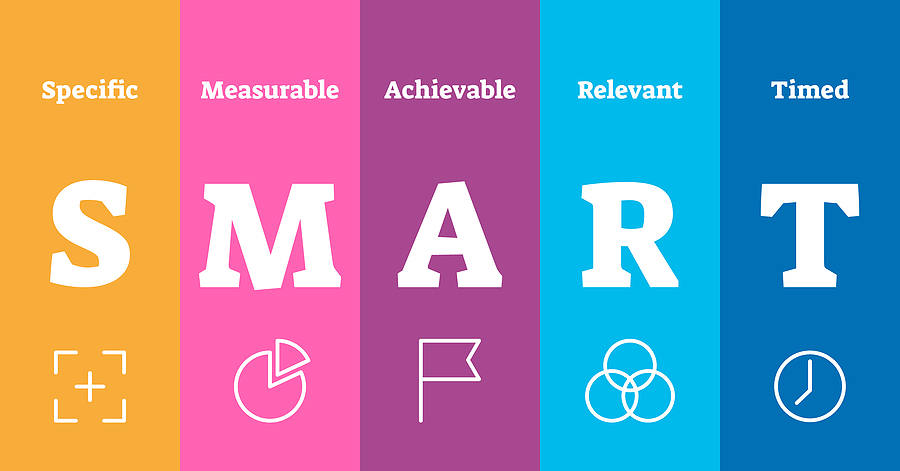Professional goals are measurable objectives designed to guide career growth and ensure ongoing development. Unlike personal goals, which focus on individual pursuits, professional goals aim to enhance skills and advance careers in a structured manner. These can range from improving leadership or communication to long-term aspirations like earning a promotion or transitioning roles. Professional goals align personal ambitions with organizational needs, blending individual growth with workplace contributions.
Why Professional Development Goals Matter?
Setting professional goals is crucial for career growth, yet often overlooked. Goal-setting serves as a strategic tool, helping professionals align daily actions with long-term career objectives. In fast-evolving sectors like technology and management, clear goals can be the key to career acceleration. Goals provide a roadmap to measure progress and adapt to industry changes, ensuring professionals stay competitive.
In a dynamic work environment filled with technological shifts and market demands, professional goals help avoid stagnation. They push individuals to acquire new skills, take on challenges, and remain relevant. These goals also align with organizational objectives, increasing your value to employers. For instance, leadership goals not only improve personal capacity but also benefit teams and companies.
By actively setting and revising professional goals, individuals enhance their career prospects, adapt to change, and contribute more effectively to their industries, positioning themselves for long-term success.

How to Set Professional Goals You Care About: In 3 Steps
☑ Identify Your Core Values: Before setting any professional goals, take the time to reflect on your core values and long-term aspirations. Your goals should align with what truly matters to you in your career, whether it’s leadership, creativity, or work-life balance. Understanding your values will help ensure that the goals you set are meaningful and motivating.
☑ Set SMART Goals: Once you’ve identified your values, use the SMART criteria (Specific, Measurable, Achievable, Relevant, Time-bound) to define your goals. This framework ensures your objectives are clear, actionable, and trackable. For instance, rather than setting a vague goal like “become a better leader,” aim for something specific like “complete a leadership certification within six months.”
☑ Break Goals into Actionable Steps: After setting your goals, break them down into smaller, actionable steps. This approach prevents overwhelm and helps you focus on achieving progress consistently. For example, if your goal is to improve delegation, one step might be to start delegating one task per week to a team member, followed by feedback sessions to assess the outcomes.
How to Select a Professional Goal That’s Right for You: 5 Key Steps
Choosing the right professional goals is critical for personal and career development. Without a clear, well-thought-out goal, you may find yourself putting effort into tasks that don’t align with your true aspirations or long-term success. Here’s a structured approach to selecting and achieving the right professional goal for you, based on 5 essential steps:
1. Self-Assessment and Reflection
Before setting a professional goal, start with an honest self-assessment. Reflect on your strengths, weaknesses, current skills, and areas where you need improvement. Consider your past experiences, challenges you’ve overcome, and what aspects of your career bring you the most satisfaction. Are there certain skills or responsibilities you want to develop further? Understanding where you are currently in your career and what excites you about your work will provide clarity on where you want to go next.
Tip: Consider taking personality assessments like the Myers-Briggs Type Indicator (MBTI) or StrengthsFinder to get additional insights into your natural inclinations and capabilities.
2. Align Goals with Long-Term Career Aspirations
Once you’ve completed a self-assessment, think about your long-term career aspirations. What do you see yourself doing in 5, 10, or 15 years? Do you want to move into a leadership role, change industries, or develop new technical skills? Your short-term goals should serve as stepping stones toward those long-term ambitions. For example, if you want to become a senior manager, set goals that build leadership skills, like managing a small team or leading a project initiative.
Tip: Use the SMART goal framework (Specific, Measurable, Achievable, Relevant, Time-bound) to ensure that your short-term goals contribute to your broader career vision.
3. Consider the Needs of Your Industry and Organization
Selecting a professional goal isn’t just about personal fulfillment; it also involves aligning with the needs of your industry and organization. Research emerging trends, technologies, and required skill sets in your field to stay competitive. Additionally, think about how your goals can help meet your organization’s current and future objectives. Whether it’s mastering a new software tool or improving project management skills, choosing goals that align with both your personal interests and organizational needs will increase your impact and likelihood of success.
Tip: Speak to your manager or a mentor about company goals and how you can align your professional development with the organization’s objectives.
4. Break Down Larger Goals into Manageable Milestones
A significant goal may seem overwhelming at first, so it’s important to break it down into smaller, manageable milestones. For instance, if your goal is to lead a cross-functional project, the milestones could include improving your delegation skills, attending a project management workshop, and then volunteering to lead smaller initiatives. This approach makes it easier to track progress and allows you to celebrate small wins along the way, which can be motivating.
Tip: Create a timeline for achieving each milestone and hold yourself accountable by reviewing your progress regularly.
5. Seek Feedback and Adjust Along the Way
Finally, don’t set your professional goals in isolation. Seek feedback from colleagues, mentors, or managers to ensure your goals are realistic and aligned with your strengths and potential. As you make progress, evaluate how things are going, and be open to adjusting your goals if needed. Sometimes, as you grow professionally, you may discover new interests or opportunities that weren’t apparent at the beginning. Staying flexible will allow you to pivot when necessary, ensuring that your goals evolve as your career progresses.
Tip: Set regular check-ins with a mentor or peer to discuss your progress and receive guidance on overcoming any challenges.
23 Examples of Professional Goals
When setting professional goals, it’s important to strike a balance between short-term objectives that can deliver immediate impact and long-term aspirations that shape the trajectory of your career. Below is a list of 23 professional goals, split into short-term and long-term categories, to help guide your career advancement.
Short-Term Professional Goals (1-11)
Short-term goals are immediate, actionable steps that can be achieved within a few months to a year. These goals help improve your current performance and set the foundation for long-term success.
1. Improve Time Management Skills
Enhance your ability to prioritize tasks, avoid distractions, and meet deadlines by using productivity techniques like time-blocking or task prioritization.
2. Earn a Relevant Certification
Enroll in a certification program relevant to your field (e.g., PMP, Agile, or Six Sigma) to bolster your qualifications and make yourself more marketable.
3. Enhance Communication Skills
Focus on improving both written and verbal communication. This could involve taking courses in public speaking or active listening.
4. Develop Conflict Resolution Skills
Mastering conflict resolution is essential in any collaborative environment. Focus on learning techniques that help you manage disputes effectively within your team.
5. Improve Delegation Skills
If you’re in a leadership role, enhance your ability to delegate tasks efficiently, empowering your team members to grow and manage responsibilities.
6. Stay Updated on Industry Trends
Regularly read industry publications, attend webinars, or subscribe to newsletters to remain informed about the latest developments in your field.
7. Build Stronger Relationships with Stakeholders
Strengthen your communication and rapport with clients, vendors, and other stakeholders to ensure smoother project execution and long-term partnerships.
8. Learn a New Software Tool
Choose a new software or technology that can enhance your current workflow, whether it’s a project management tool like Nimble, or an analytics software.
9. Improve Remote Collaboration Skills
Adapt to remote work trends by mastering tools like Zoom, Slack, or project management platforms. Improve how you manage projects and collaborate with remote teams.
10. Expand Your Professional Network
Make it a goal to attend at least two industry events (in-person or virtual) per quarter to build and maintain a strong professional network.
11. Seek Mentorship
Find a mentor who can guide you through your professional journey, offering insights, advice, and valuable experience that can help you make strategic career moves.
Long-Term Professional Goals (12-23)
Long-term goals are focused on broadening your professional horizons over a period of several years. These goals typically require ongoing effort and are aligned with the overall trajectory of your career.
12. Achieve a Leadership Role
Set your sights on securing a leadership position, such as a team lead or department head, by focusing on strengthening your leadership, delegation, and strategic planning skills.
13. Transition to a New Career Path
If you’re looking to pivot in your career, set a long-term goal of acquiring the necessary skills, certifications, and experience needed to move into a new industry or role.
14. Develop Strategic Thinking
Cultivate the ability to think strategically about your projects, company goals, and industry trends. This skill will help you make high-level decisions and take on more responsibility.
15. Build an Industry Reputation
Establish yourself as an expert in your field by publishing articles, speaking at conferences, or being active on industry forums.
16. Foster Innovation in Your Work
Focus on incorporating innovative thinking and creative problem-solving in your day-to-day responsibilities. Whether it’s developing new processes or tools, fostering creativity is a long-term goal that pays off.
17. Create a Personal Brand
Develop a strong personal brand that reflects your professional values and skills. This could involve creating an online portfolio, writing a blog, or becoming more active on LinkedIn.
18. Become a Thought Leader
Long-term, aim to become a thought leader in your industry by sharing insights through blogs, public speaking engagements, or publishing research.
19. Master Strategic Problem-Solving
Develop advanced problem-solving skills to manage larger, more complex challenges in your organization. Focus on creativity, analysis, and teamwork to deliver innovative solutions.
20. Lead a Cross-Functional Team
Aim to lead a cross-functional team, giving you the opportunity to collaborate with different departments and learn how to manage diverse skill sets and perspectives.
21. Pursue Executive-Level Roles
Set a long-term goal of advancing to the C-suite by continuously honing your leadership skills, understanding of business strategy, and industry expertise.
22. Start Your Own Business or Consultancy
For those with an entrepreneurial spirit, a long-term professional goal might be to start your own business or consultancy in your field of expertise.
23. Plan for Continuous Learning and Development
Commit to lifelong learning by continuously seeking out opportunities for education, whether through courses, certifications, or hands-on experience in new areas.
Conclusion
Setting and achieving professional goals is a critical part of advancing in your career. Whether you’re a project manager, part of a PMO, or working in any professional capacity, clearly defined goals give direction and purpose to your work. As discussed throughout this article, the process of selecting the right professional goals starts with understanding yourself—your strengths, weaknesses, aspirations, and the areas where you want to improve. Reflecting on your current situation allows you to make informed decisions about the skills you need to develop or the milestones you want to achieve.
In conclusion, professional goals are not just boxes to tick off but are meaningful objectives that shape your career trajectory. By understanding your own ambitions, aligning them with broader industry and organizational needs, and following a structured approach to goal-setting, you set yourself up for ongoing success. Whether your goals are short-term improvements or long-term aspirations, each step you take brings you closer to becoming the professional you aim to be. So, take the time to reflect, plan, and execute—because every goal you achieve is a step forward in your career.








